-
Car Reviews
- All reviews
- Midsize SUVs
- Small cars
- Utes
- Small SUVs
- Large SUVs
- Large cars
- Sports SUVs
- Sports cars
- Vans
Latest reviews
- Car News
-
Car Comparisons
Latest comparisons
- Chasing Deals
Emerging from one of the most effective facelifts we’ve seen in this segment, the 2021 Nissan Navara is better looking, more refined and safer than ever.
Last year, the Nissan Navara placed sixth in the very hard-fought segment of the Australian market that is 4×4 dual cab utes.
Not a bad result, but with 9,777 Australians taking a Navara home in 2020, Nissan falls some way short of firm podium-placegetters like the Ford Ranger (37,889 sales), the Toyota HiLux (34,766) and even the Mitsubishi Triton (15,649).
The current-generation ‘D23’ Nissan Navara has spent years fighting an unfortunate early reputation for a sagging rear end that was the result of improperly designed springs for this ute’s multi-link rear suspension.

A comprehensive fix was implemented in 2018 and since then, the Navara has been largely free of posture problems with payload and towing capacity. But while it wore a subtle and handsome design, the D23 didn’t stand out in a field of more and more assertive-looking ‘trucks’.
Enter the 2021 Navara: a heavy reskin of the 2020 model, this is what we call an effective facelift. Far bolder at the front, particularly in the chrome-trimmed ST-X guise on test, the Navara’s bonnet is now higher and bluff, with a very prominent grille proudly wearing this model’s name stamped into the shining metal.
Around the back it’s a similar story, with a redesigned tailgate with prominent Navara stamping. The bed is also raised for an altogether higher, more rugged look for the vehicle. While the doors are retained, on the whole, this looks like a new ute.
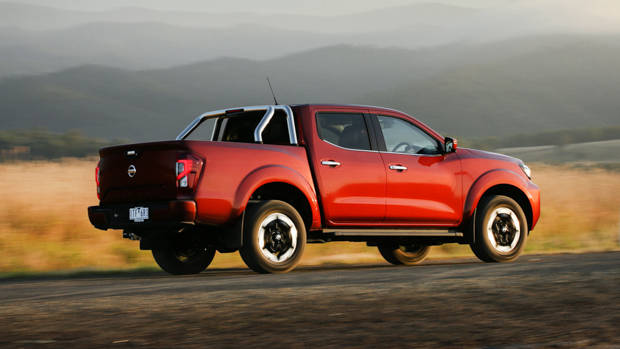
Nissan have also nixed the cheapest variants of the Navara, reflecting the fact that the ute market in Australia is marching headlong towards what this brand calls high and super-high grades.
At $59,790 for an auto with leather, the Navara ST-X on test caters for the ‘high’ grade buyers, while the incoming PRO-4X off-road special – priced at $62,790 with auto – aims at the super-high.
Later, a reborn Australian-developed Navara Warrior is likely to arrive to cap off the range with an even more capable off-roading variant.
Most of the mechanicals of the 2021 Nissan Navara carry over from last year’s model.
There are three exceptions to this. The rear axle is strengthened and the rear brakes are larger for the 2021 variant, supporting Nissan’s choice to standardise a one tonne payload rating across all dual-cab trims.
Then there’s the fact Nissan have incorporated more sound deadening into the 2021 Navara – there’s more of it and it is used in more places, plus the material used is of a higher quality.
Put simply, this has worked: the 2021 Navara is noticeably quieter in the cabin in all situations, including when the engine is under load. But the difference is especially noticeable when cruising on the highway at a consistent speed: this ute is now seriously muted in the cabin, which makes the Navara relaxing to drive for long distances.

Under the bonnet there’s still a 2.3-litre four-cylinder diesel engine. Low-end grades get a single turbo version making 120kW/403Nm, but most 2021 Navaras pack the twin-turbo unit that makes 140kW of power and 450Nm of torque.
Nissan have retained a choice of six-speed manual or seven-speed torque converter automatic gearboxes across the range, with the slush-box attracting a $1,500 impost despite the fact it is the overwhelmingly more popular choice.
We continue to describe the Navara’s 2.3-litre engine as adequate. Never quick, the Navara gets the job done. It’s largely unfussed when unladen, but with a payload in the tray and towing a weight out back, the engine gets noisy – with the transmission tuned to rev out, despite the fact the ute’s peak torque is all located at 1,500rpm.
There is no question that the 2.3-litre can cope: we towed 1.1 tonnes up quite a few steep inclines without issue. The engine gets a little coarse in these situations and you wouldn’t say the progress is effortless.
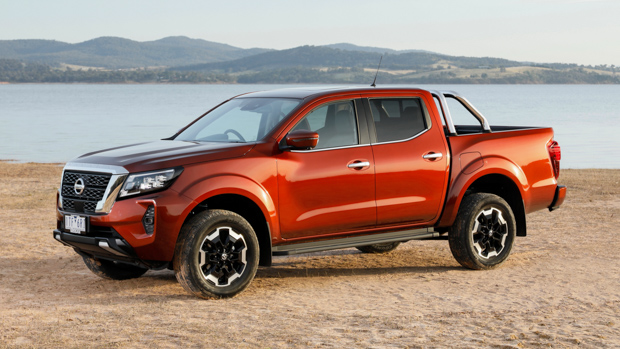
We didn’t have the opportunity to take the Navara up to its 3.5 tonne braked towing limit, but if this is something you plan to do, we think a higher-displacement option with more torque, like an Amarok V6, will be a safer bet.
The lack of a premium engine – perhaps a V6 – holds the Navara back, as this is otherwise one of our favourite utes. The Nissan is impressively refined, thanks to the new sound deadening and also thanks to its rear suspension.
Nissan went against the grain in giving most D23 Navara grades a multi-link rear (rather than primitive leaf springs commonly used in pick-up utes in Australia), and initially, this generation of Navara suffered for that decision.
An Australian-tuned revision of the rear suspension to dual-stage springs in 2018 solved early posture problems and the Navara now rides uncannily well in most situations.
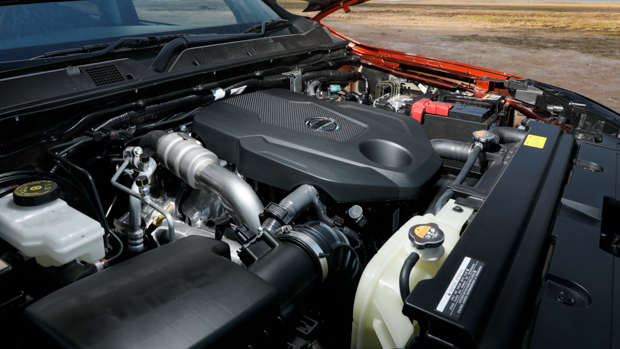
Totally unladen the rear is still a little shaky, but bump absorption is well above average for this class, with a compliant first stage to the springs and a heavier-duty second stage that keeps the rear quite level with a load in and/or out the back.
The Navara’s steering ratio was also dramatically reduced in 2018 to make this ute feel more agile, and certainly, the steering – delivered through a new, smaller wheel for 2021 – is quicker than most.
However, the handling is still ponderous, with the Navara taking a second to settle its weight over the outside front tyre before starting to truly turn. A Ford Ranger feels more confidence-inspiring in faster bends.
Shame the Navara hasn’t adopted disc brakes in the rear as well as the front, but it is hardly the only big-name ute to hold back the best braking technology from both axles – the Ranger, HiLux and Triton all do this too…
There’s more safety tech aboard for 2021, too, with a suite of what Nissan call ‘Intelligent Mobility’ features offered as standard. These include forward AEB and collision warning across the range.
On the ST model and above – including this ST-X – you also get blind spot monitoring with active intervention, lane departure warning with intervention, rear cross-traffic alert, and automatic high beam.
There have been a few revisions to the Navara’s cabin with this facelift, but most of the components inside carry over.
These include the moulding of the dashboard, centre console, and doors, all of which are starting to date now – they are six years old, so that makes sense.
That said, build quality is excellent inside the Navara, with no rattles or creaks evident in our test car. It’s a solid-feeling vehicle, and while the cabin isn’t hugely progressive in design, the basics are all there.
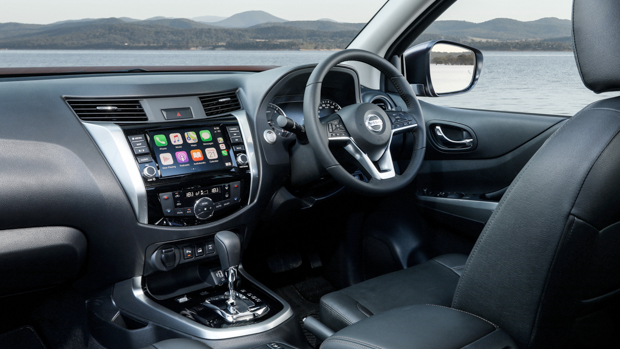
What’s new is the steering wheel, borrowed from Nissan’s SUVs – it’s smaller, better looking and feels good in the hand. But it isn’t adjustable for reach, even in the year 2021!
Behind the steering wheel, the easily readable analogue speedo and tacho now sit astride a new seven-inch colour trip computer, which provides some good intel: a digital speedo beneath a moving compass, plus trip, audio, navigation and safety information. It’s a small change that actually makes the interior feel quite a bit newer.
There are also new seat designs, including handsome watch strap quilted leather that is a worthwhile option for the ST-X. The driver benefits from electric adjustment, including good under-thigh adjustment that helps in securing a good driving position. The squab is a bit short, though, and the passenger seat is manually adjustable.
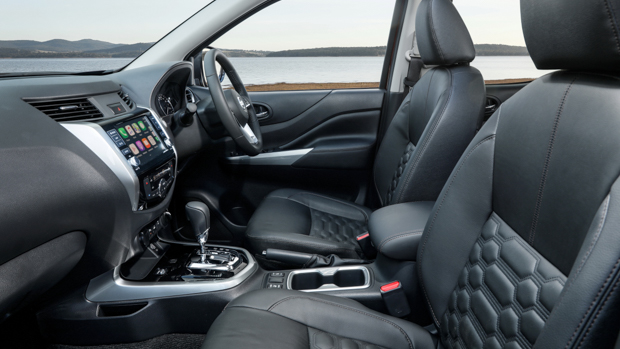
The 2021 Navara keeps the bigger eight-inch touchscreen introduced on last year’s model. It’s a decent unit, clearly visible, and Nissan’s software is both snappy and intuitive. The single front-row USB port also powers wired Apple CarPlay and Android Auto. Audio quality from the stereo is acceptable, but nothing more.
Practicality is reasonable, with midsize cupholders between the seats, water bottle holders in the doors and a cubby under the armrest, though you won’t find wireless charging in here.
Moving to the back seat reveals a second row that is more spacious than some rivals – and with some thoughtful touches. The seat base, in particular, is inclined enough to actually support the legs of adults travelling back there: more than can be said for some utes.
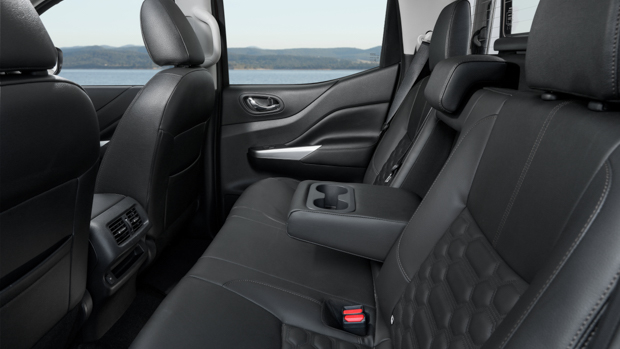
A centre armrest is new, with two cup holders integrated into it. Plus, there are air vents and a new rear-row USB port for charging devices.
However, you won’t find bag hooks on the back of the front seats as you get across several competitors.
A ute’s tray is hardly ‘interior’, but the Navara’s is reasonable – the ST-X in particular has an impressive factory heavy-duty tie-down setup and a quality bed liner. Every variant gets a unique sports bar designed in Australia.
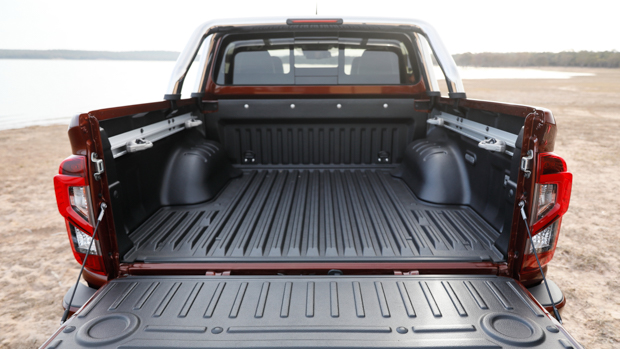
All Navara models sold in Australia are diesel, and the 2.3-litre twin-turbo variant on test here delivered acceptable fuel economy.
Nissan says the twin-turbo drinks 7.9L/100km on the combined cycle, and in our drive across Melbourne’s suburbs, outer country roads and highway network, we managed 9L/100km unladen and about 12L/100km towing a 1.1-tonne load.
The D23 Navara can run for a year or 20,000km between services – those intervals are a little more generous than the 1 year/15,000km you get on most utes.
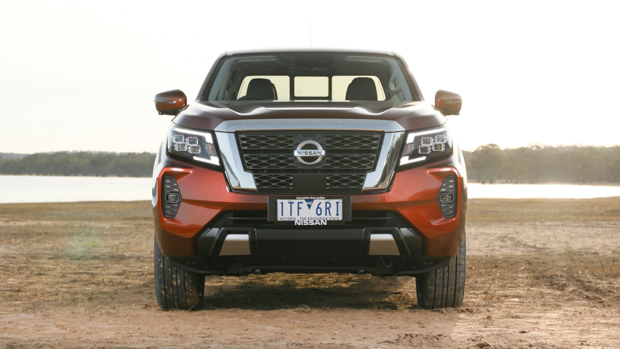
Nissan publish their service costs online. An automatic Navara will cost $524, $549, $695, $549 and $524 respectively for the first five services. That adds up to $1,768 for three years of running or $2,841 for five years, which is about average for a vehicle like this.
Like all Nissans in Australia, the 2021 Navara comes with a five year, unlimited kilometre warranty. This is fully transferable to new owners. You also get five years of roadside assistance.
This is a worthy update to Nissan’s ute.
If you’ve been considering a Navara for a while, the 2021 version is better looking, more refined, a little more capable and ultimately, more desirable.
Australian tastes have been moving toward preferring more assertive ute styling for a while, and the new Navara arguably delivers the best local interpretation of this American-style design.
While the interior is starting to feel a little old, most other parts of this ute are quite fresh and competitive with the rest of the segment – including the good ride quality and particularly quiet cabin.
Those wanting the ultimate Navara may wish to wait another month for the arrival of the PRO-4X – or longer for the possible second iteration of the Warrior, of which the original 1,400 units all sold out in Australia.
But for now, the Navara ST-X offers plenty of benefits at a sub-$60,000 price point.
Variant tested ST-X with Leather
Key specs (as tested)
About Chasing cars
Chasing Cars reviews are 100% independent.
Because we are powered by Budget Direct Insurance, we don’t receive advertising or sales revenue from car manufacturers.
We’re truly independent – giving you Australia’s best car reviews.
The estimate provided does not take into account your personal circumstances but is intended to give a general indication of the cost of insurance, in order to obtain a complete quote, please visit www.budgetdirect.com.au. Estimate includes 15%^ online discount.
^Conditions Apply
Budget Direct Insurance arranged by Auto & General Services Pty Ltd ACN 003 617 909(AGS) AFSL 241 411, for and on behalf of the insurer, Auto & General Insurance Company Limited(ABN 42 111 586 353, AFSL 285 571).Because we don’t know your financial needs, we can’t advise you if this insurance will suit you. You should consider your needs and the Product Disclosure Statement before making a decision to buy insurance. Terms and conditions apply.
Indicative quote based on assumptions including postcode , 40 year old male with no offences, licence suspensions or claims in the last 5 years, a NCD Rating 1 and no younger drivers listed. White car, driven up to 10,000kms a year, unfinanced, with no modifications, factory options and/or non-standard accessories, private use only and garaged at night.
^Online Discounts Terms & Conditions
1. Discounts apply to the premium paid for a new Budget Direct Gold Comprehensive Car Insurance, Third Party Property Only or Third Party Property, Fire & Theft Insurance policy initiated online on or after 29 March 2017. Discounts do not apply to optional Roadside Assistance.
2. Discounts do not apply to any renewal offer of insurance.
3. Discounts only apply to the insurance portion of the premium. Discounts are applied before government charges, taxes, levies and fees, including instalment processing fees (as applicable). The full extent of discounts may therefore be impacted.
4. We reserve the right to change the offer without notice.